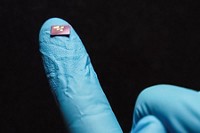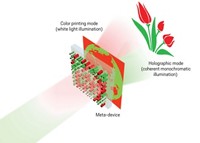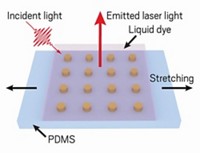Advertisement
Grab your lab coat. Let's get started
Welcome!
Welcome!
Create an account below to get 6 C&EN articles per month, receive newsletters and more - all free.
It seems this is your first time logging in online. Please enter the following information to continue.
As an ACS member you automatically get access to this site. All we need is few more details to create your reading experience.
Not you? Sign in with a different account.
Not you? Sign in with a different account.
ERROR 1
ERROR 1
ERROR 2
ERROR 2
ERROR 2
ERROR 2
ERROR 2
Password and Confirm password must match.
If you have an ACS member number, please enter it here so we can link this account to your membership. (optional)
ERROR 2
ACS values your privacy. By submitting your information, you are gaining access to C&EN and subscribing to our weekly newsletter. We use the information you provide to make your reading experience better, and we will never sell your data to third party members.
Analytical Chemistry
A Quantum Dot Mini Spectrometer
Spectroscopy: A device made from an array of 195 filters covers a 300-nm range and resolves peaks separated by 2 nm
by Celia Henry Arnaud
July 6, 2015
| A version of this story appeared in
Volume 93, Issue 27
Miniature spectrometers could make it easier to perform spectroscopy on the go. Jie Bao of Tsinghua University, in Beijing, and Moungi G. Bawendi of MIT have now developed a new way of creating one from an array of 195 filters made by printing different colloidal quantum dot inks on a microchip (Nature 2015, DOI: 10.1038/nature14576). The spectrometer, which covers the wavelength range of 390 to 690 nm, is the size of the charge-coupled device (CCD) sensor in a digital camera. Because each filter transmits light differently at different wavelengths, the intensity of light transmitted through the set can be combined to reconstruct the spectrum. Bao and Bawendi used their spectrometer to measure spectra generated by a white light source and a set of optical filters and to measure the emission spectra of fluorescent colloidal quantum dots. The researchers were able to resolve spectral peaks separated by 2 to 3 nm. They say the spectral range and resolution could be further improved by using additional quantum dot filters.






Join the conversation
Contact the reporter
Submit a Letter to the Editor for publication
Engage with us on Twitter